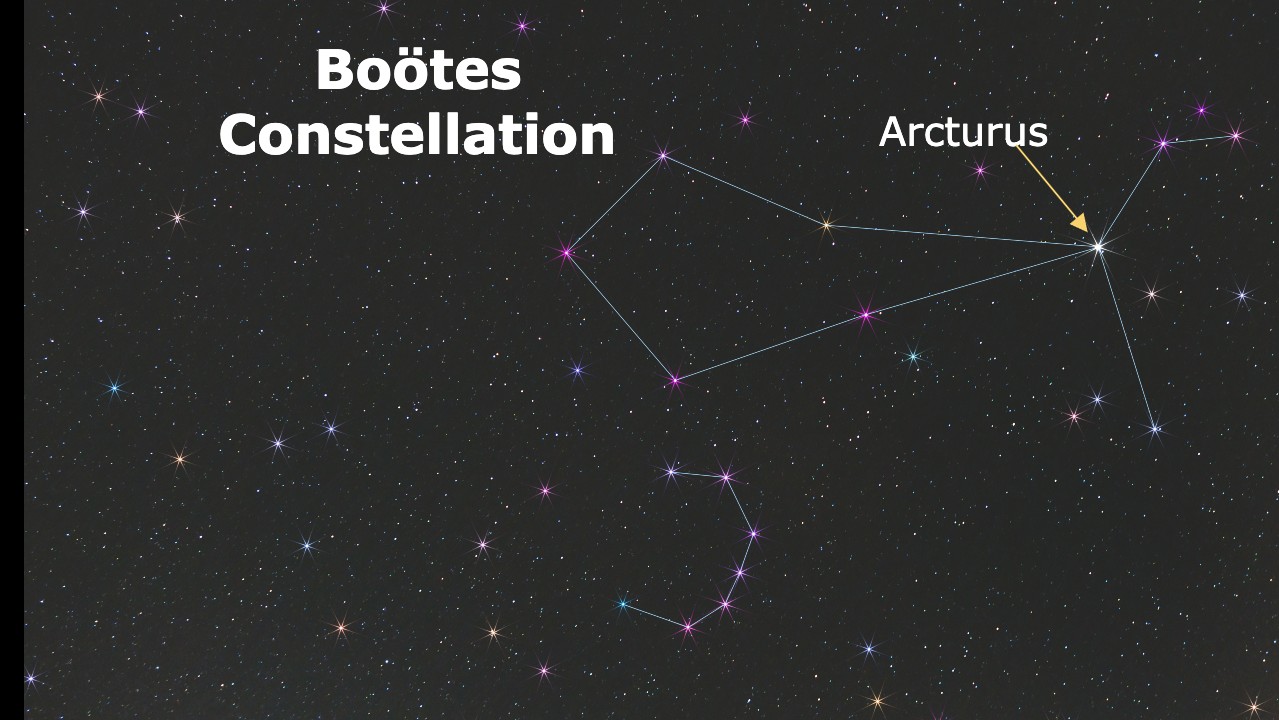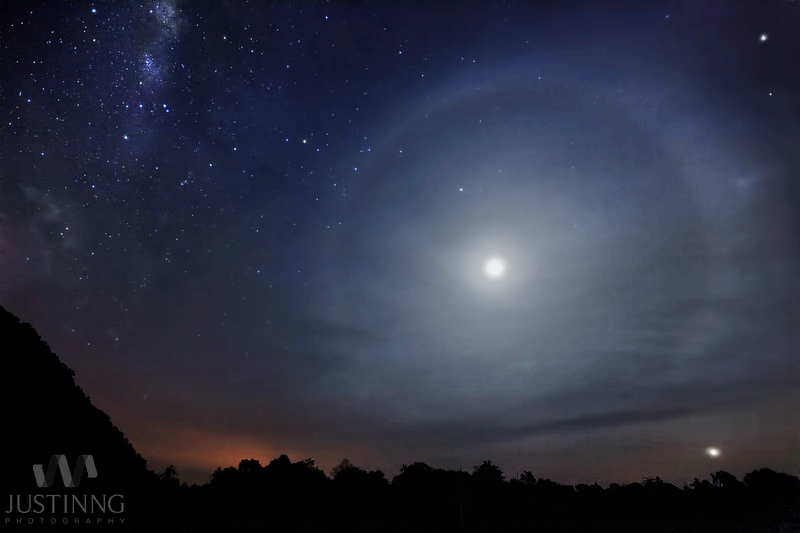Arcturus: Facts about the bright red giant star
Meet Arcturus, one of the brightest stars in the night sky.

Arcturus is a red giant star in the Northern Hemisphere of Earth's sky and the brightest star in the constellation Boötes (the herdsman). Arcturus is also among the brightest stars that can be seen from Earth. Astronomers say Arcturus will end up as a white dwarf at the end of its life.
The name Artcurus comes from the Greek meaning "keeper or guardian of the bear", which refers to its position adjacent to the tail of the constellation Ursa Major (the Great Bear).
Locating Arcturus

Arcturus can be found around 37 light-years away from Earth and is the 4th brightest star in the night sky.
The easiest way to spot Arcturus is by following the curve of the "handle" of the Big Dipper . A simple way to remember how to find the star is to recall the famous phrase "Follow the arc to Arcturus and then speed on to Spica." The latter part of that phrase refers to the bright star Spica, which is actually a binary star.
Arcturus's location is:
- Right ascension: 14 hours, 15 minutes, 39.7 seconds
- Declination: +19 degrees, 10 minutes, 57 seconds
Chicago World's Fair
Organizers for the Chicago World's Fair in 1933 were searching for a memorable way to open their exhibit. The previous world's fair in the city had occurred 40 years earlier, in 1893. Because at the time, Arcturus was believed to be about 40 light-years away from Earth, the fair's organizers hit upon the idea of using the star's light as a part of the new exhibition and as a way to commemorate the previous Chicago World's Fair.
At 9:15 p.m. Central Time on May 27, 1933, telescopes focused the star's light on several photoelectric cells. The electric current from the star-powered photo cells was used to flip a switch that turned on the floodlights at the exhibition grounds.
Years later, measurements refined the distance to Arcturus as 37 light-years away from Earth. So, the light that was used at the Chicago's World Fair actually began its journey to Earth in 1896, not in 1893.
Modern understanding of Arcturus
Today, astronomers know that Arcturus packs a lot of punch despite being only about 1.5 times the mass of the sun. To the naked eye, Arcturus appears to shine about 113 times more brightly than the sun, according to Jim Kaler, a professor emeritus at the University of Illinois at Urbana-Champaign.
Arcturus, however, has a lower temperature than the sun, which means that a lot of the red giant star's energy is radiated as heat. Once this is accounted for, Arcturus actually releases 215 times more heat than Earth's sun. Arcturus has an apparent magnitude of -0.04 and an absolute magnitude of 0.2. (The brighter the star, the lower its apparent and absolute magnitudes.) The star is in the latter stages of its life. Considered a red giant, Arcturus has stopped fusing hydrogen in its core, as the sun does, and astronomers believe it is now starting to fuse heavier elements such as carbon.
"Such stars are not expected to have magnetic activity like the sun, but very weak X-ray emission suggests that Arcturus, indeed, is magnetically active and has a hard-to-observe 'buried corona,'" wrote Kaler, referring to the shining shell of a star that is most easily visible when the star's main body is eclipsed.
Once Arcturus exhausts its helium supply, its outer layers will likely bleed off, leaving behind a white dwarf remnant.

Arcturus in fiction
No planets have been found surrounding this star, although science fiction has explored that subject. One early example is David Lindsay's book "A Voyage to Arcturus" (Methuen & Co. Ltd., 1920). The book's protagonist travels to Tormance, a fictional planet that orbits Arcturus.
Arcturus — either the star or a fictional planet with the same name — has also appeared in many other science fiction series, including Isaac Asimov's "Foundation" book series, the "Doctor Who" and "Star Trek" television series, and the movie "Aliens." In "The Hitchhiker's Guide to the Galaxy" universe, a famous phrase goes, "However fast the body travels, the soul travels at the speed of an Arcturan megacamel."
Additional resources
To find out more about constellations and stars, head to the International Astronomical Union. Check out "Constellations: The Story of Space Told Through the 88 Known Star Patterns in the Night Sky" by Govert Schilling and " The Easy Guide to the Night Sky: Discovering the Constellations with Your Eyes and Binoculars" by Richard J. Bartlett for more on observing he night sky.
Bibliography
James B. Kaler, "Arcturus. In: The Hundred Greatest Stars", Springer, New York, 2002, https://doi.org/10.1007/0-387-21625-1_10
Cheryl R. Ganz, "The 1933 Chicago World's Fair", University of Illinois Press, 2008.
Harvard-Smithsonian Center for Astrophysics, "Bootes", Chandra X-ray Observatory, December 2013.
Join our Space Forums to keep talking space on the latest missions, night sky and more! And if you have a news tip, correction or comment, let us know at: community@space.com.
Breaking space news, the latest updates on rocket launches, skywatching events and more!

Elizabeth Howell (she/her), Ph.D., was a staff writer in the spaceflight channel between 2022 and 2024 specializing in Canadian space news. She was contributing writer for Space.com for 10 years from 2012 to 2024. Elizabeth's reporting includes multiple exclusives with the White House, leading world coverage about a lost-and-found space tomato on the International Space Station, witnessing five human spaceflight launches on two continents, flying parabolic, working inside a spacesuit, and participating in a simulated Mars mission. Her latest book, "Why Am I Taller?" (ECW Press, 2022) is co-written with astronaut Dave Williams.
